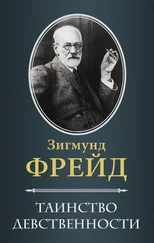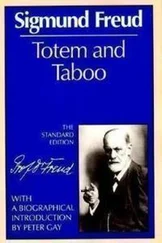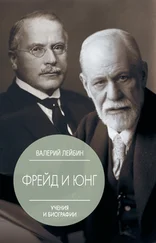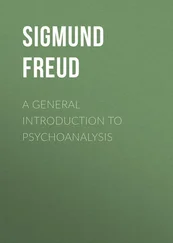Allow me to suggest that you call such series complementary series . We shall have occasion to establish other series of this sort.
The tenacity with which the libido clings to certain tendencies and objects, the so–called adhesiveness of the libido, appears to us as an independent factor, individually variable, the determining conditions of which are completely unknown to us, but the importance of which for the etiology of the neuroses we can no longer underestimate. At the same time we must not overestimate the closeness of this interrelation. A similar adhesiveness of the libido occurs—for unknown reasons—in normal persons under various conditions, and is a determining factor in the perverse, who are in a certain sense the opposite of nervous. Before the period of psychoanalysis, it was known (Binet) that the anamnesia of the perverse is often traced back to an early impression—an abnormality in the tendency of the instinct or its choice of object—and it is to this that the libido of the individual has clung for life. Frequently it is hard to say how such an impression becomes capable of attracting the libido so intensively. I shall give you a case of this kind which I observed myself. A man, to whom the genital and all other sex stimuli of woman now mean nothing, who in fact can only be thrown into an irresistible sexual excitation by the sight of a shoe on a foot of a certain form, is able to recall an experience he had in his sixth year, which proved decisive for the fixation of his libido. One day he sat on a stool beside his governess, who was to give him an English lesson. She was an old, shriveled, unbeautiful girl with washed–out blue eyes and a pug nose, who on this day, because of some injury, had put a velvet slipper on her foot and stretched it out on a footstool; the leg itself she had most decorously covered. After a diffident attempt at normal sexual activity, undertaken during puberty, such a thin sinewy foot as his governess' had become the sole object of his sexuality; and the man was irresistibly carried away if other features, reminiscent of the English governess, appeared in conjunction with the foot. Through this fixation of the libido the man did not become neurotic but perverse, a foot fetishist, as we say. So you see that, although exaggerated and premature fixation of the libido is indispensable for the causation of neuroses, its sphere of action exceeds the limits of neuroses immeasurably. This condition also, taken by itself, is no more decisive than abstinence.
And so the problem of the cause of neuroses seems to become more complicated. Psychoanalytic investigation does, in fact, acquaint us with a new factor, not considered in our etiological series, which is recognized most easily in those cases where permanent well–being is suddenly disturbed by an attack of neurosis. These individuals regularly show signs of contradiction between their wishes, or, as we are wont to say, indication of psychic conflict . A part of their personality represents certain wishes, another rebels against them and resists them. A neurosis cannot come into existence without such conflict. This may seem to be of small significance. You know that our psychic life is continually agitated by conflicts for which we must find a solution. Certain conditions, therefore, must exist to make such a conflict pathological. We want to know what these conditions are, what psychic powers form the background for these pathological conflicts, what relation the conflict bears to the causative factors.
I hope I shall be able to give you satisfactory answers to these questions even if I must make them schematically brief. Self–denial gives rise to conflict, for libido deprived of its gratification is forced to seek other means and ends. A pathogenic conflict arises when these other means and ends arouse the disfavor of one part of the personality, and a veto ensues which makes the new mode of gratification impossible for the time being. This is the point of departure for the development of the symptoms, a process which we shall consider later. The rejected libidinous desires manage to have their own way, through circuitous byways, but not without catering to the objections through the observance of certain symptom–formation; the symptoms are the new or substitute satisfaction which the condition of self–denial has made necessary.
We can express the significance of the psychic conflict in another way, by saying: the outer self–denial, in order to become pathological, must be supplemented by an inner self–denial. Outer denial removes one possibility of gratification, inner denial would like to exclude another possibility, and it is this second possibility which becomes the center of the ensuing conflict. I prefer this form of presentation because it possesses secret content. It implies the probability that the inner impediment found its origin in the prehistoric stage of human development in real external hindrances.
What powers are these which interpose objections to libidinous desire, who are the other parties to the pathological conflict? They are, in the widest sense, the non–sexual impulses. We call them comprehensively the "ego impulses"; psychoanalysis of transference neuroses does not grant us ready access to their further investigation, but we learn to know them, in a measure, through the resistance they offer to analysis. The pathological struggle is waged between ego–impulses and sexual impulses. In a series of cases it appears as though conflict could exist between various purely sexual desires; but that is really the same thing, for of the two sexual desires involved in the conflict, one is always considerate of the ego, while the other demands that the ego be denied, and so it remains a conflict between the ego and sexuality.
Again and again when psychoanalysis claimed that psychological event was the result of sexual impulses, indignant protest was raised that in psychic life there were other impulses and interests besides the sexual, that everything could not be derived from sexuality, etc. Well, it is a great pleasure to share for once the opinion of one's opponents. Psychoanalysis never forgot that non–sexual impulses exist. It insisted on the decided distinction between sexual and ego–impulses and maintained in the face of every objection not that neuroses arise from sexuality, but that they owe their origin to the conflict between sexuality and the ego. Psychoanalysis can have no reasonable motive for denying the existence or significance of ego–impulses, even though it investigates the influence sexual impulses play in illness and in life. Only it has been destined to deal primarily with sexual impulses, because transference neuroses have furnished the readiest access to their investigation, and because it had become obligatory to study what others had neglected.
It does not follow, either, that psychoanalysis has never occupied itself at all with the non–sexual side of personality. The very distinction of the ego from sexuality has shown most clearly that the ego–impulses also pass through a significant development, which is by no means entirely independent of the development of the libido, nor does it fail to exert a reaction upon it. To be sure, we know much less about the evolution of the ego than about libido development, for so far only the study of narcistic neuroses has promised to throw light on the structure of the ego. There is extant the notable attempt of Ferenczi to construct theoretically the stages of ego development, and furthermore we already possess two fixed points from which to proceed in our evolution of this development. We do not dream of asserting that the libidinous interests of a person are from the outset opposed to the interests of self–preservation; in every stage, rather, the ego will strive to remain in harmony with its sexual organization at that time, and accommodate itself thereto. The succession of the separate phases of development of libido probably follows a prescribed program; but we cannot deny that this sequence can be influenced by the ego, and that a certain parallelism of the phases of development of the ego and the libido may also be assumed. Indeed, the disturbance of this parallelism could become a pathological factor. One of the most important insights we have to gain is the nature of the attitude which the ego exhibits when an intensive fixation of its libido is left behind in one stage of its development. It may countenance the fixation and accordingly become perverse or, what amounts to the same thing, become infantile. Or it may be averse to this attachment of the libido, the result of which is that wherever the libido is subject to fixation , there the ego undergoes suppression .
Читать дальше







